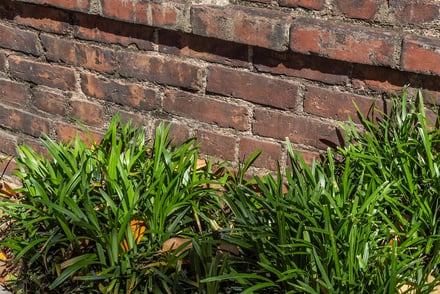 Sometimes, homeowners want to alter the appearance of their home with paint, but the timeless beauty of a historic brick home often makes it difficult to decide what to do. While a fresh coat of paint can add charm and individuality to your house, it is not without its challenges, especially for historic properties. If you’ve been dreaming of adding color to your home’s exterior, weighing the benefits against the potential drawbacks before making such a permanent decision is essential.
Sometimes, homeowners want to alter the appearance of their home with paint, but the timeless beauty of a historic brick home often makes it difficult to decide what to do. While a fresh coat of paint can add charm and individuality to your house, it is not without its challenges, especially for historic properties. If you’ve been dreaming of adding color to your home’s exterior, weighing the benefits against the potential drawbacks before making such a permanent decision is essential.
The Appeal of a Painted Brick Home
Rows of brick homes painted in various complementary colors can be quite welcoming. Adding these colors can transform a brick facade and allow your home to stand out or blend into the well-curated palette of the block. Painting your home could also provide a solution for mismatched bricks or faded exteriors, enhancing curb appeal and possibly boosting resale value, depending on the buyer.
However, choosing the right color is crucial, especially in older neighborhoods. Researching historic color palettes will help you find hues that suit your taste as well as match the character of the surrounding homes. Historically accurate colors can blend beautifully with the era of your home, ensuring the new look enhances rather than detracts from its historic integrity.
Considering the Timelessness of Natural Brick
There’s a solid case to be made for leaving your brick in its natural state. Unpainted brick is a testament to historical craftsmanship, representing your home's original construction techniques and materials. Preserving that natural look can give your house a more authentic charm that matches its historical context
Unlike painted surfaces, natural brick requires less upkeep over time. While it will still need care and maintenance, especially with mortar joints, unpainted brick won’t peel, saving you from the commitment of repainting every few years. Instead of painting, you can refresh your home’s appearance with tuckpointing. It will restore the mortar joints and enhance the overall look of your historic home.
The Practical Side: Is Your Brick Ready for Paint?
Before diving into any painting project, it’s vital to assess the condition of your brick. If the brick is deteriorating, cracked or showing signs of wear, painting can make the problem worse. Moisture trapped behind layers of paint can lead to further damage, causing the brick to crumble or spall. A thorough inspection by a historic brick expert will help determine if your brick and mortar are in good enough condition to be painted.
Any required repairs will need to be completed before the painting begins. Painting over damaged mortar doesn’t protect it from further deterioration, so addressing these issues upfront is critical to a successful paint application.
It’s important to select a breathable, masonry-specific paint that allows moisture to escape. Non-porous paints can trap moisture inside the brick, leading to peeling paint and further structural problems. Unlike tuckpointing, which can last decades, painted brick will require routine maintenance, typically needing fresh coats of paint every few years as exposure to weather takes its toll.
Striking a Balance: Alternative Solutions
If you’re torn between maintaining the natural beauty of your historic brick and adding some modern flair, there are alternatives to painting the entire facade. Consider painting just the trim around windows, doors and other architectural details. This can provide the pop of color you’re looking for without covering the brick itself.
Another option is to consult with a historic preservation specialist who can help you find creative ways to personalize your home without compromising its character. With a strategic approach, you can enhance your home’s exterior while preserving the timeless qualities that make historic brick homes so special.
Renaissance Development, experts in tuckpointing historic brick homes in DC, offers a number of services that can enhance the functionality and beauty of your property, such as retaining walls, patios, front steps, urban gardens, iron work, and wooden fencing. Contact us to arrange a complimentary consultation.
Tags:
old brick, Painting Old Brick, Paint Old Brick, paint colors, historic brick home, historic brick, Historic Brick Home DCOct 3, 2024 8:30:00 AM


